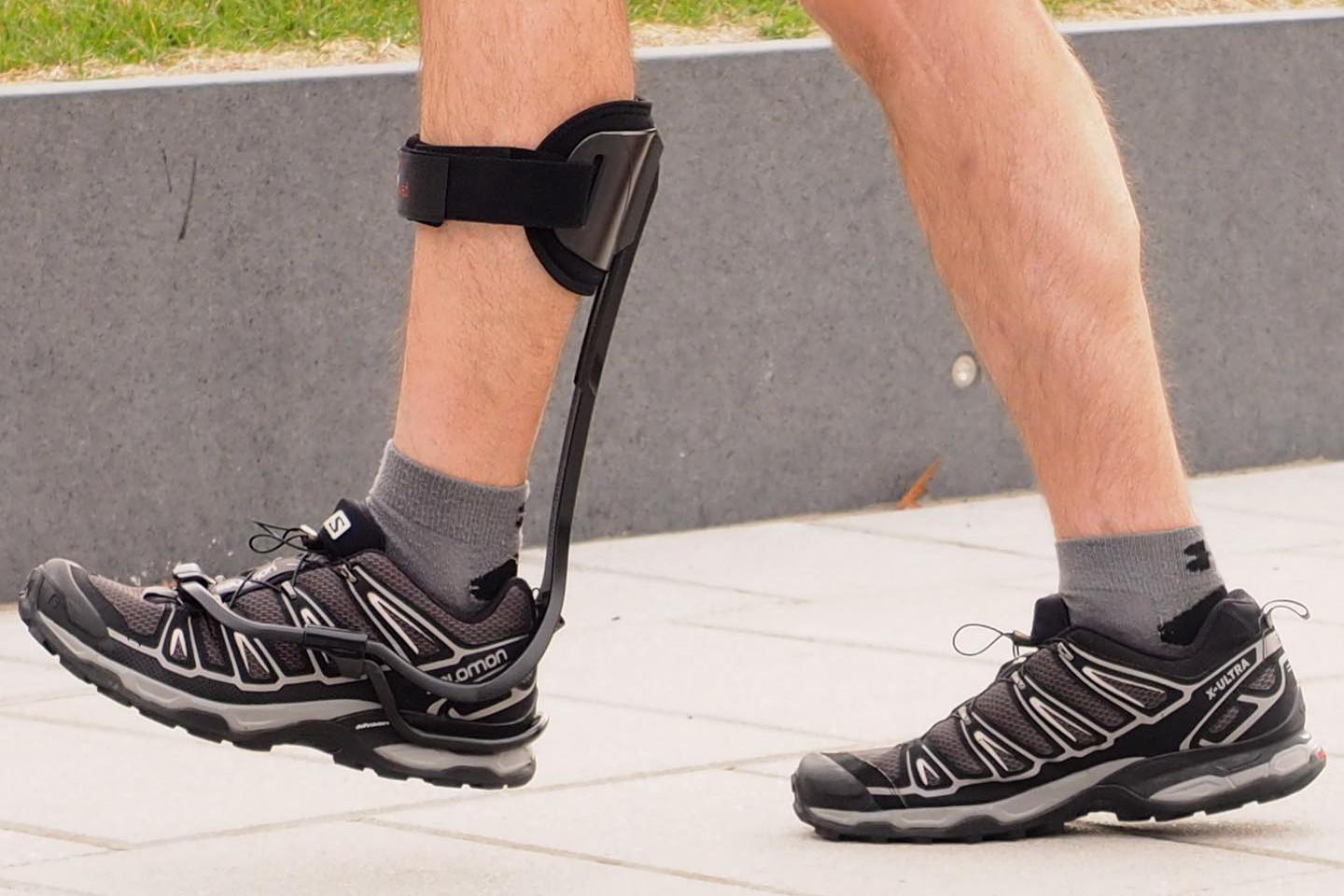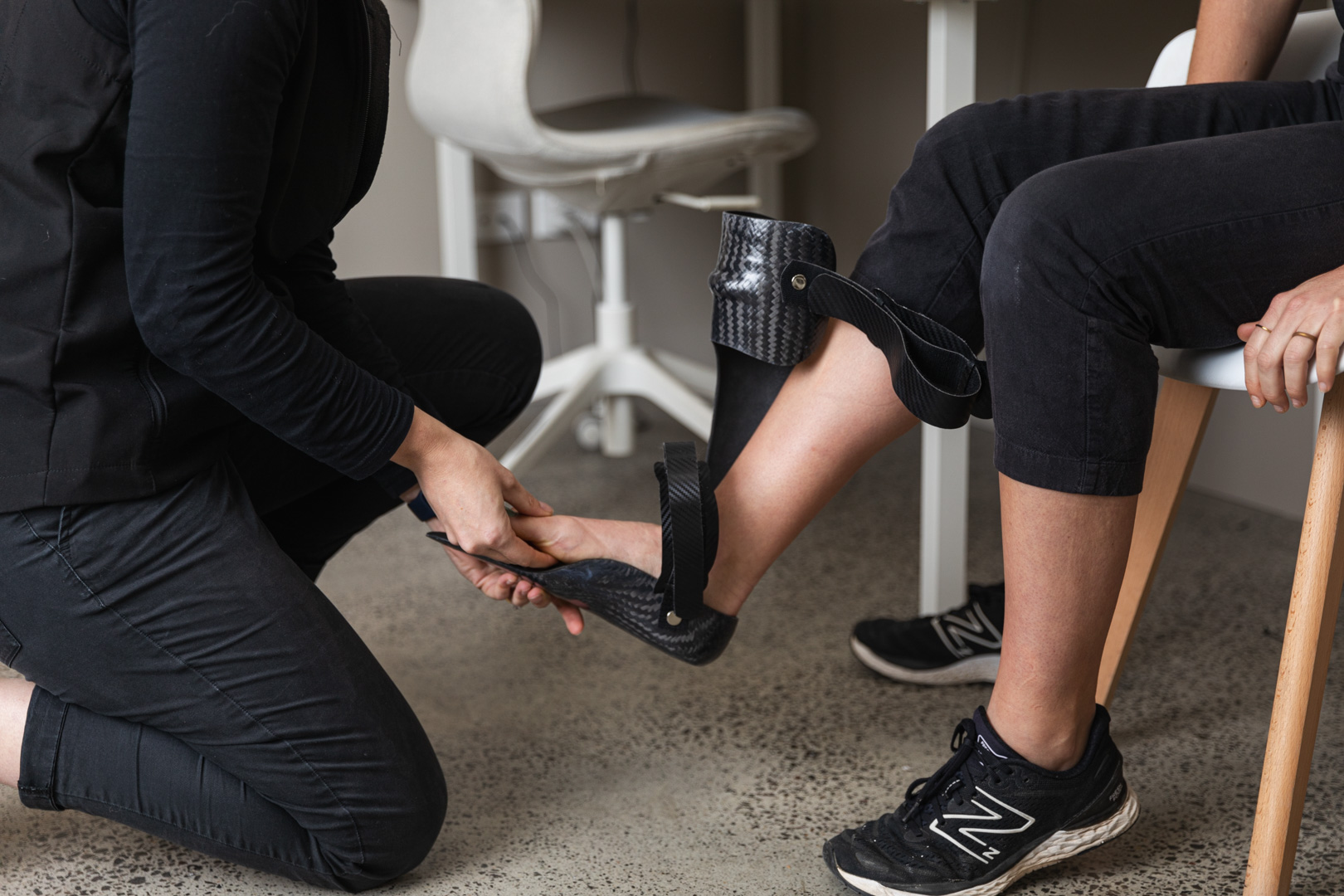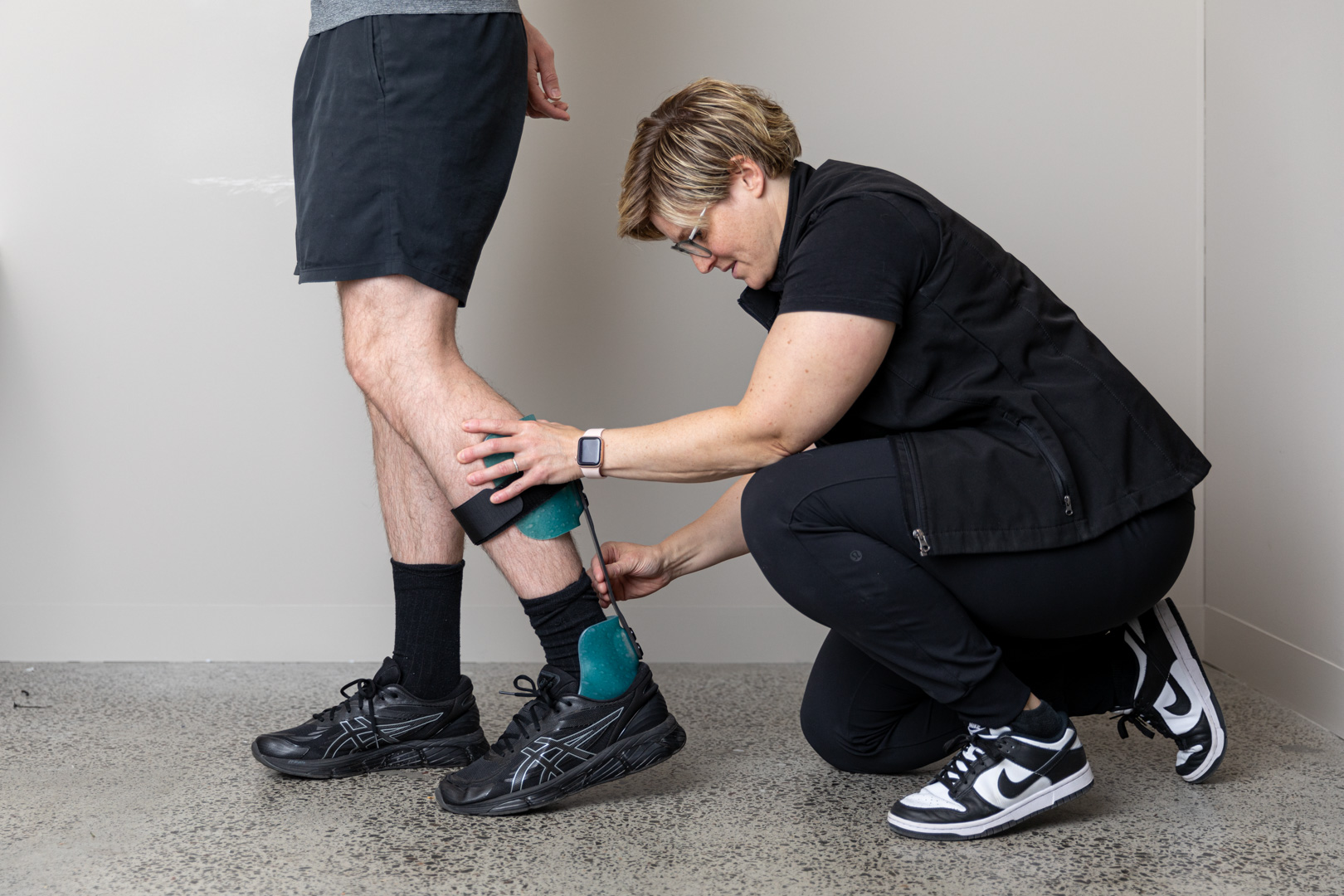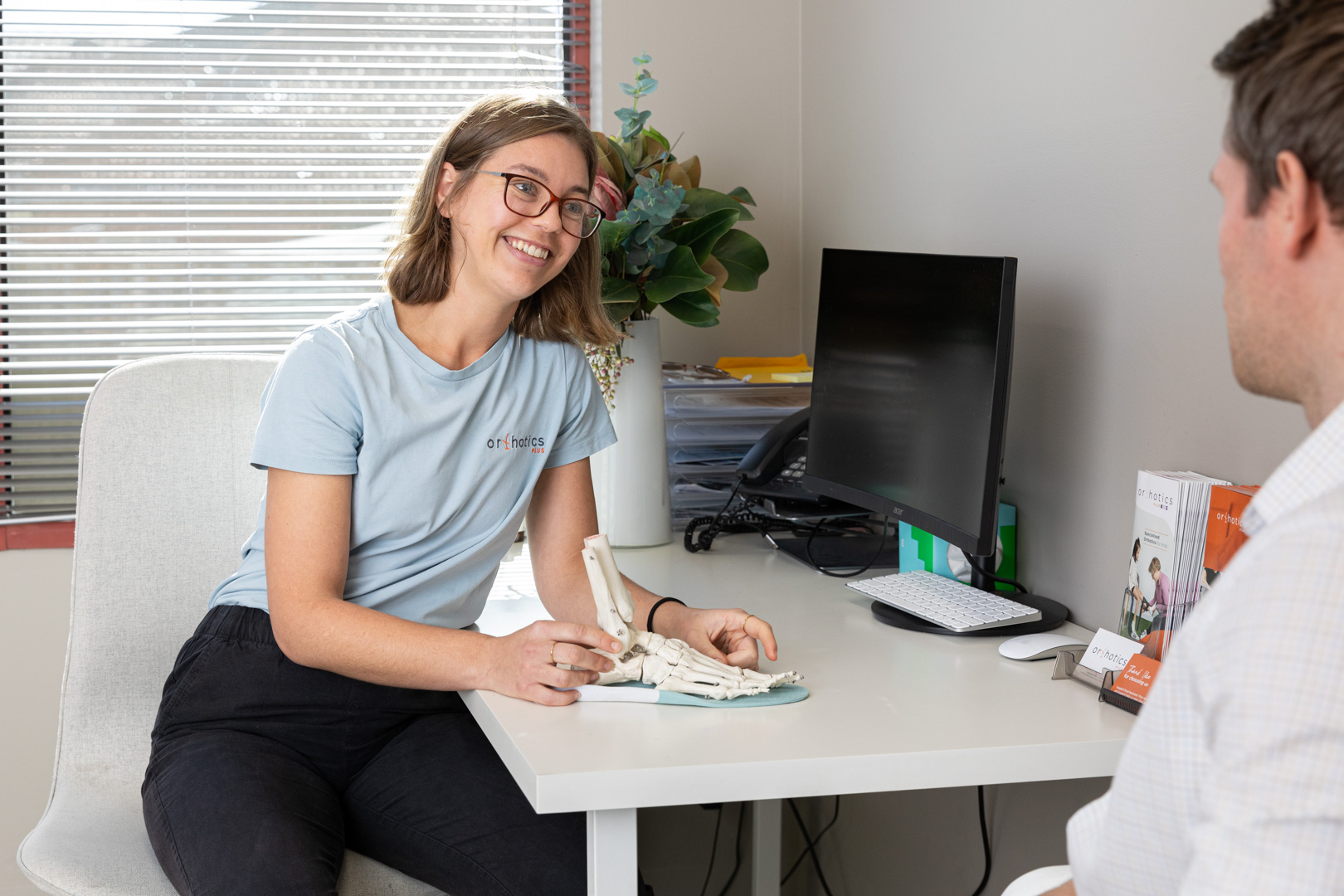AFOs for Cerebral Palsy
AFOs can be an important piece of the puzzle in the management of cerebral palsy, helping improve walking, mobility and joint protection.
At Orthotics Plus, we work closely with appropriate individuals and families to customise each device based on your unique presentation and goals.
Specific muscle weaknesses, gait pattern, severity and type of spasticity all play a big role in how we design an AFO. For example- for clients with high tone or unpredictable muscle activity, solid AFOs are often preferred to maintain stability and alignment. This helps reduce the risk of sudden muscle activation (colloquially called a “catch”) and supports safer movement patterns.
Each case is unique, so we collaborate with individuals and their support team to find the right solution.
Book a Foot Assessment Call (03) 9077 6414

Common AFO Styles for Cerebral Palsy
There’s no one-size-fits-all approach to AFOs in CP- AFOs can be any variety of material, trim lines, with or without joints and there are sometimes multiple correct prescriptions.
Commonly, we use plastic AFOs for children, as they are lightweight and easily adjustable. However if the problem presents mostly as weakness rather than spasticity and is limited to foot drop for example we might be able to prescribe lower profile lightweight carbon fibre devices.
For children, we may install ‘inner booties’, which can be removed as they grow, increasing the lifespan of the product.
For active individuals, especially teens and young adults, we may consider carbon fibre devices like the NEURO SWING or a PDE style AFO which allow ankle movement and give energy return when walking.
Prescription depends on goals and presentation and of course budget.
An AFO is only part of the puzzle and at Orthotics Plus we can review the additional supports around the AFO.
For example, many people benefit from shoe modifications to optimise their AFO, and there are more advanced devices, such as full body supports like Mollii suits that reduce spasticity and improve overall outcomes.
As a private provider, we’re able to offer more tailored options to our clients.


AFOs for Children with Cerebral Palsy
An AFOs role goes beyond aiding with walking.
They provide support to the foot and ankle complex, helping to optimise both function and development as the child grows.
In children with CP, muscle tone abnormalities such as spasticity or high tone can place constant abnormal forces on the foot and ankle. Over time, this can lead to misalignment, instability, and even permanent deformities such as equinus (toe walking), flatfoot, or valgus/varus deformities. Since children’s bones and joints are still developing, they are vulnerable to these progressive structural changes.
AFOs help by holding the foot and ankle in a more neutral or functionally optimal position. This alignment helps to:
- Prevent or reduce the progression of deformities by counteracting abnormal muscle pull.
- Promote symmetrical growth of bones and joints, supporting more typical foot development.
- Improve gait mechanics by providing stability and proper joint positioning during walking.
- Enhance balance and safety, particularly during standing and ambulation.
- Reduce energy expenditure, allowing children to move more efficiently and comfortably.
Of course, these all contribute to improved quality of life. AFOs are also prescribed in conjunction with Physiotherapy and other healthcare, making them a part of a multidisciplinary approach to managing mobility and preventing secondary complications.


When AFOs Need Review or Replacement
For children, AFOs generally need a review every 3 to 6 months and replacement every 6 to 12 months, depending on growth.
If the foot begins to extend beyond the footplate or if the fit becomes uncomfortable, it may be time for a new device.
Adults with CP may keep a device for several years, but regular reviews are still important, especially if body shape or functional needs change.
Orthotics Plus is NDIS registered and can support you in submitting NDIS Assistive Technology requests as part of our NDIS reviews.

AFOs for Cerebral Palsy and Their Effect on Walking
At Orthotics Plus, we recognise that walking patterns in individuals with Cerebral Palsy (CP) can vary significantly depending on the type and severity of the condition, as well as the person’s age and mobility goals.
For many people with CP, gait retraining is not simply about correcting an existing movement pattern—it often begins with establishing a functional and sustainable way of walking.
In early development, AFOs assist in shaping foundational gait mechanics, such as initial contact, mid-stance stability, and toe clearance during swing phase. By promoting a more functional gait pattern, AFOs can reduce long-term musculoskeletal complications such as joint contractures, dysfunction, and progressive deformity.
In both children and adults with CP, AFOs contribute to:
- Joint alignment and biomechanical efficiency
- Energy conservation during walking
- Reduction of compensatory gait deviations
- Improved balance and postural control
At Orthotics Plus, this is why we provide a bespoke consultation experience, as we want our clients walking pattern to be as optimised as it can be.


Addressing Concerns About Over-Reliance
It’s normal for people to worry about “relying” too much on an AFO.
But in reality, the goal is increased function, not dependency.
AFOs enable people to move more confidently, safely and often more frequently—which can build strength over time. Walking more, being upright, and using muscles in new ways all help support better long-term outcomes.
Wearing an AFO can also help break inefficient or harmful walking habits, like limping or overcompensating, which might lead to pain or injury in the future.
As a general rule, we will not immobilise body segments where it is safe in the short and long term to do so.
So while immobilisation of certain joints is sometimes necessary, the bigger picture is improved mobility and quality of life.

Measuring Success in AFO for CP Prescription
We look at both clinical outcomes and personal feedback, but this is more a qualitative outcome, so we ask:
- Does the patient walk better?
- Are they safer?
- Has the foot maintained its posture and shape?
- Does their gait appear more natural?
- Are they doing more than before?
- Are they comfortable?
- Do they want to keep using their AFO?
Whilst we could record the metrics of attributes such as stride length or walking speed, this is not taking a holistic viewpoint.
In our view, when someone comes back asking for a second AFO some years later, that’s a good sign we got it right.
If you’d like to learn more about AFOs for CP or book a personalised consultation, the Orthotics Plus team is here to help. 🧡
